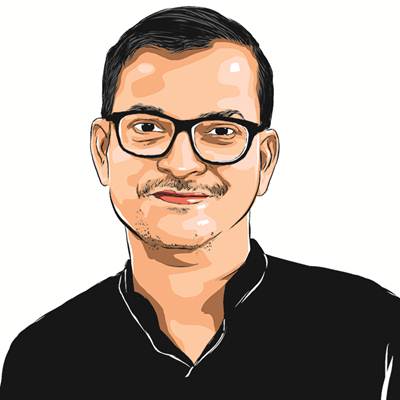Opinion Kanwar Yatra and what we don’t see: The true meaning of devotion
Kanwariyas return home having experienced not just divinity but also lessons in fellow feeling and togetherness
 Religion without its core of compassion loses its profundity, and thus, its soul.
Religion without its core of compassion loses its profundity, and thus, its soul. Any visual of kanwariyas brandishing sticks and swords and indulging in violence, as witnessed on several occasions recently, goes against all that religious pilgrimages have traditionally stood for. The holy month of Shravana signifies the arrival of the monsoon season. Rains placate the parched land and kanwariyas start their journey. The pilgrims collect water from the Ganga and carry it in a palanquin to offer it to Lord Shiva. It is believed that the water helps reduce the bitterness of the poison that Lord Shiva has carried with him since samudra manthan.
Mircea Eliade, Romanian scholar of history of religion, considers a pilgrimage to be an act or journey towards transformation, a quest for a higher order of the sacred, away from the everyday world of the profane. Humans have a tendency to come close to what he calls Axis mundi, or the centre of the world — a point where heaven and Earth connect. Eliade considers these experiences to be hierophanies or the appearance of the sacred in the everyday world, which are universal across societies and cultures. Pilgrimages are moments of hierophanies.
The kanwariya pilgrimage has a rich, profound and ancient past. Baidyanath Dham or Baba Dham, now in Jharkhand, is renowned for its great kanwariya tradition. In Shravana, pilgrims rush to Sultanganj in Bihar, where they take a bath in the Ganga, take water from the sacred river in pitchers and start walking barefoot to Baidyanath Dham. They are popularly known as bam and address each other as such. A popular chant during the journey happens to be “Bol bam, bol bam; Bol re bhaiya bol re didi bol bam” (Chant O brother, chant O sister, chant O bam). Typically attired in saffron clothes and carrying decorated palanquins of all sizes and colours, these bams walk day and night, navigating difficult terrains. The entire journey brims with camaraderie. More distinguished among the bams are those who walk non-stop and are known as daak-bam. People will make way for them, treating them with utmost reverence. All the ordinary barriers — of caste and class — will evaporate amid this bonhomie of faith. All one can hear are stories of support, gestures of sacrifice and help, like in the case of a stranger who carried an elderly bam on his back for several kilometres. People return home having experienced not just divinity and communitas but also lessons in fellow feeling and togetherness.
Two distinct childhood memories, in particular, remain indelible. Once, an elderly aunt, in her 60s, returned from the Kanwar Yatra. She looked weak. Her feet were swollen and bruised because of the continuous walking. The whole family and the neighbourhood came to tend to her feet and seek her blessings. It was believed that the blessings she had earned in the pilgrimage would pass on to those who served her. The gains of pilgrimage were transmissible to the deserving and eligible. One learnt profound lessons in humanity in these moments: Any attempt to achieve higher goals must necessarily celebrate the pain and suffering of the process.
The onset of rains and the beginning of Shravana also brings back the memory of the dance of the saintly fellow who would come visiting every household in the village, seeking alms to undertake the kanwariya pilgrimage to Baidyanath Dham. His devotional songs were melancholic and left a deep impression. That he came from the outskirts of the village made no difference whatsoever. People watched him perform with awe and reverence. Two lines that he repeated often — “Baba ho virage Odiya desh me. Bolo bhaia Ram-e-Ram” (Lord Mahadev who belongs to Odiya desh, let’s all chant the name of Ram) — continues to resonate, reminding us of a time when Odisha and Bihar were part of the Bengal Presidency. In that world, religion organised societies and people used to communicate through its symbolic meaning. Today, are we even listening to our gods and what they signify in essence? Religion without its core of compassion loses its profundity, and thus, its soul.
The writer teaches Sociology at Dr BR Ambedkar University, Delhi. His latest book is The Deras: Culture. Diversity and Politics. Views are personal






